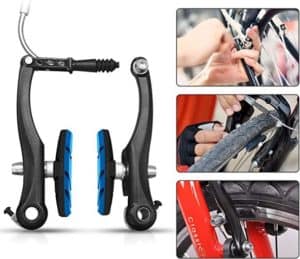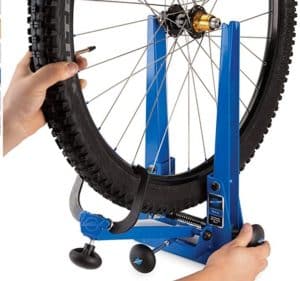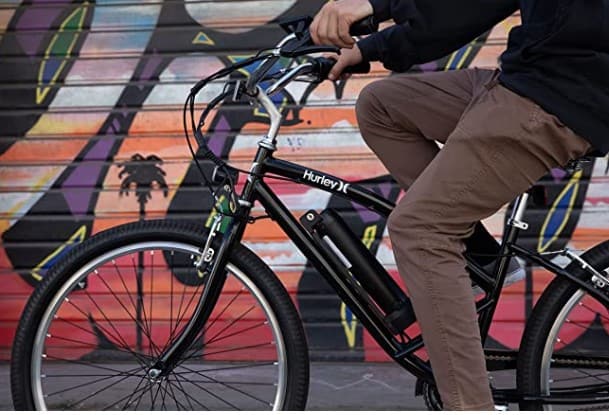So, why are my bike brakes not working? That’s what most cyclists ask, but they sadly cannot find the answer. But since I’ve been there before, I’m going to share my experience.
Your bike brakes don’t work because they are sticky, loose, misaligned, or contaminated with grime, grease, or dirt. They may also fail because of rubbing against the tire or rim, because of overheating or air bubbles or faulty brake cables.
You should also note that some brakes fail because of worn-out brake pads. So, the solution for such an issue is to replace the brake pads.
Overall, there isn’t a worse nightmare for a cyclist than failing brakes. Your cycling adventure could literary turn catastrophic.

So, understanding the reason behind the failing brakes is pivotal in avoiding any catastrophe.
Now, let’s dig deeper into why your bike brakes may be failing.
Why Are My Bike Brakes Not Working? Possible Causes In Detail
1. Brake Squeaking
Your brake parts may produce a squeaking sound due to contamination by dust, grease, or dirt. Often, this is a case of not taking care of your brake.
The other possible reason, though rare, is brake vibration, associated with brake misalignment.
Solution
Consider cleaning your brake pads correctly, which you can do with a brake cleaning oil. And if the dirt is stubborn or it’s a case of grease buildup, use a brake degreaser like CRC SL3301 Brake & Caliper Grease.
However, if it’s a case of vibration, then you’ll need to realign your brakes.
2. Brake Rub
Nothing is more severe than bike brakes that rub against the tire or wheel. Not only does that wear down your brake pads quickly, but it can also result in a catastrophic accident.
In most cases, it’s due to misadjusted brake pads, but it can also be due to a misaligned wheel.
Solution
Given that most modern bike brakes feature adjustment screws, you can adjust them to reposition the brake pads properly.
You’ve to continue twisting the screws until the brake pads are at the correct distance. Once you do that, tighten the holding nuts.
However, if it’s a case of a misaligned wheel, you’ll have to take a different approach.
You can align a misaligned wheel using these steps:
- Loosen the wheel’s quick-release until the axel sits nicely in the drop-outs
- After that, retighten the quick-release to allow the wheel to sit more centrally, and that will stop the brake pads from rubbing against it
Your wheels won’t be wobbling sideways after the steps. But if this process doesn’t work, it’s time to true your bike wheel.

3. Brake Stickiness
So, your bike brakes won’t release? That could be a case of brake stickiness, and it’s primarily due to contamination by dirt, grime, or grease.
Sometimes, the contamination may be due to rust.
Solution
If the brake cable housing appears rusty, replace it. But if it’s a case of grease, dirt, or grime contamination, consider cleaning the brake system.
Luckily, you can use a degreaser spray to clean off excess grease and grime. You can also use alcohol to get rid of oil and stubborn dirt.
4. Loose Brakes
Do you pull your bike brakes, and there is only a small effect? The chances are that your brake cable is loose, and that means you should adjust its tension.
The other possible explanation is that the brake cable could be slipping through the fixing bolts.
Solution
Try adjusting the caliper bolt to ensure the brake cable doesn’t slip through. Also, consider adjusting the cable tension.
5. Brake Glaze
After aggressively riding your bike, the brake rotors (disc) may heat up, resulting in your brake pads glazing. Glazed-up brake pads will not just slow you down but will also produce a disturbing squeaking sound.
Solution
Consider riding more often on paved roads to avoid glazing your brake pads. And when you get to the hills, you’ve to press your brakes lightly.
But if your brake pads are already glazed up, you’ll need to remove them and then sand them using sandpaper. However, if the glazing is extreme, you’ve no choice but to replace the brakes.
You can also approach a bike brakes repair mechanic for direction.
6. Brake Overheat
If you consistently engage the brakes for more extended periods, especially when cycling downhill, your brake pads may overheat.
You can identify overheated brakes by checking for a discolored rotor.
Solution
With this problem, there’s only one fix, and that’s to replace the brake system. It also means that you should get an option with a more oversized rotor to prevent brake overheating in the future.

7. Brake Misalignment
If your brake pads are not correctly positioned, they won’t grip. In that case, the solution is to adjust the brake pads precisely by turning the side screws.
8. Faulty Brake Cable
You can identify a faulty brake cable by looking for any of these signs:
- Damaged cable
- Frayed cable
- Cable slipping off
- Improper cable tension
Solution
You’ve no choice but to replace your faulty cable. Ensure you get a high-quality cable replacement so that it can serve you longer.
9. Air Bubbles
If there’s a leak that makes the hydraulic fluid drain out, you’ve to bleed the hydraulic brake system.
Bleeding refers to getting rid of air bubbles, and you can do it using a hose.
The process takes about 10 minutes, and it’s similar to purging out the brake fluid.
10. Worn Out Brake Pads
Lastly, watch out for signs of brake pad wear. Some of them include:
- Grooves on the rubber surface
- Squeaking, gritty, or clicking sound
- Brake stickiness
- Uneven wear on the brake pads
- More force needed to engage the brakes
Remember, brake pads are likely to wear over time, but they can also wear down following constant sun exposure.
Solution
Replace your existing brake pads with new ones, and you’ll say goodbye to your bike brakes not working.
- See more on how to fix bike brakes that don’t work

How Can You Keep Your Bike Brakes in Good Working Condition?
Now that you know why most bike brakes are not working, how do you prevent a brake failure? How can you boost the life and performance of your bike brakes?
Before we can answer that, you must know the type of bike brake that you have. That’ll help you maintain them accordingly.
Generally, we have the following bike brake types:
- Rim brakes
- Disc brakes
Rim Brakes Vs. Disc Brakes
Rim brakes essentially work by pressing the brake pads onto the rim. These brakes are mechanically operated by a cable attached to the brake lever.
You’ll find rim brakes on urban bikes, road bicycles, and older bike models. Their advantage is that they are lighter, cheaper, easier to repair, and more aerodynamic than disc brakes.
Disc brakes, in contrast, work by pressing onto disc brakes located on the center part of the wheel.
Disc brakes come either as mechanical disc brakes or hydraulic disc brakes. Mechanical disc brakes are cable-operated, while hydraulic disc brakes employ hydraulic fluid.
The advantage is that they are more powerful, more precise, and more weather-resistant than rim brakes.
How To Maintain Your Bike’s Disc Brakes
You can boost the performance and life of your bike’s disc brakes using these tips:
- Do not mix brake fluids of different brakes as that compromises the effectiveness of the brake
- Don’t over tighten the brakes
- Grease the disc brakes as often as possible but don’t overdo it
- Avoid contaminating the disc brakes either with grime, grease, or rust
- If there’s contamination, clean the contaminants off
- Bleed hydraulic disc brakes to get rid of air bubble buildup
- Replace the brake pads once you identify signs of wear
How To Maintain Your Bike’s Rim Brakes
You can boost the performance and life of your bike’s rim brakes using these tips:
- Clean the rims and brake pads as often as possible, possibly using an alcohol-based cleanser
- Adjust the cable properly to ensure the cable tension is appropriate
- Ensure the rims are centrally positioned to avoid rubbing against the brake pads
- Avoid pressing the brakes aggressively not to wear them down
- Do not overtighten the brakes when adjusting them
Relevant:
Closing Thought:
So, why are my bike brakes not working? Now you know the answer to that.
Hopefully, you can use my guide to fix your bike brakes and even avoid a brake failure in the future.